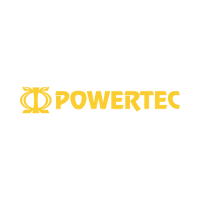
Do you have a question about the PowerTec 2000C and is the answer not in the manual?
Explains brushless DC motor technology and its benefits compared to AC motors.
Compares non-regenerative and regenerative drive capabilities.
Basic explanation of how a brushless DC motor control works.
Key advantages of using POWERTEC Brushless DC motors and controls.
Guidance on navigating and utilizing the instruction manual effectively.
Detailed electrical specifications including voltage, power, and current ratings.
Physical dimensions for chassis and NEMA 1 enclosures.
Operational requirements for altitude, temperature, and humidity.
Key performance metrics like speed regulation and accuracy.
List of adjustable parameters for tuning drive operation.
Description of status LEDs on control boards.
Explanation of each terminal's function on control boards.
Instructions for inspecting and handling received equipment.
Precautions and preparation steps before mounting the unit.
Guidelines for mounting the chassis and enclosure.
Requirements for air flow and ambient temperature for proper cooling.
Covers speed reference, minimum speed, accel/decel, max speed, ramp stop, and jog functions.
Operating the control using a digital frequency signal.
Setting the maximum output current to protect the motor and drive.
Tuning parameters for optimal control loop performance.
Essential considerations for proper electrical installation.
Specifications and requirements for the input power source.
Procedures for physically connecting the motor to the control.
Proper connection of motor wires to the control terminals.
Requirements for grounding the motor and control chassis.
Interlocking an output contactor with control circuits.
Guidelines for connecting the motor encoder feedback cable.
Overview of various control signal connections.
Methods for providing speed reference signals to the motor control.
Using analog voltage signals for speed control.
Using digital frequency signals for speed control.
Adding external relays and interfaces for enhanced control.
Adding an auxiliary RUN relay to the control system.
Connecting the control system to a PLC for external control.
Implementing a fault relay for external fault indication.
Using a relay to indicate the control's operational status.
Connecting a relay to signal when the motor is at zero speed.
Explanation of the AC input power stage and its components.
Description of the bus capacitor charging circuit.
Functionality and troubleshooting of the current sensor board.
How the power output transistors drive the motor.
Role and functions of the main current controller board.
How the speed controller board manages motor speed.
Systematic guide to diagnosing and resolving control issues using LED indicators.
Visual checks of the controller and motor for proper mounting.
Pre-power-up electrical checks for grounds and shorts.
Verifying control board voltages and LED status before running.
Procedures to test motor operation and LED indications.